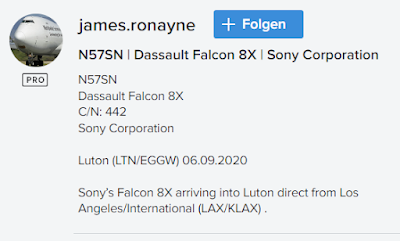PaRR (Policy and Regulatory Report) was first to report last week that the UK Competition & Markets Authority (CMA) scheduled the first two of its Microsoft-ActivisionBlizzard response hearings--the ones with the deal parties themselves--for this week. On LinkedIn, Jacob Parry wrote:
The UK Competition and Markets Authority will hold a series of response hearings starting next week into #Microsoft's acquisition of #Activision, according to sources familiar with the deal. Microsoft will defend its deal on Tuesday (28 February) while Activision will be heard on Wednesday (1 March), with third parties expected to be heard on later dates.
I tweeted about that (as I'm in the process of implementing the new editorial policy for FOSS Patents), just like Twitter was also the first platform on which I published Microsoft's reply brief that reinforces their motion to dismiss the so-called gamers' lawsuit in the Northern District of California (filed on Friday by Pacific Time).
I've updated my timeline chart in light of the exact dates of the UK hearings (click on the image to enlarge):
Due to the high density of events this week (two response hearings, FTC discovery milestone, opposition to motion for preliminary injunction), I had to use different colors: orange for the private lawsuit in San Francisco, green for the FTC's adjudicative proceeding, and blue for the CMA's merger review.
It's been almost a week since my previous post on this topic: Nvidia, which was not totally against the deal but formally involved as a third party raising concerns, is now supportive. Its problem has been solved by means of a ten-year license agreement. This means a sophisticated player believes in a licensing-based solution. Sony can't claim to be smarter than Nvidia.
It's a bad sign for a party opposing a deal (Sony is the only vocal complainer) when it appears increasingly isolated. By contrast, no one in favor of the deal has been convinced by anything that Sony or the various preliminary assessments of the deal by regulators have said. Case in point, the European Games Developer Federation reiterated its support of the transaction after the EU hearing.
There's more that has happened or become known since last week's EU hearing.
Equity Report says China's SAMR is likely to approve the deal (the timeline is unclear though):
China’s SAMR is likely to approve Microsoft’s acquisition of video game publisher Activision Blizzard, despite the review process being slowed down by potential complaints, two Chinese antitrust lawyers who have advised competitors of the parties told @equityreportuk
— Equity Report (@equityreportuk) February 23, 2023
According to various reports, gaming giant Tencent and one other Chinese company (NetEase?) are in favor of the transaction.
Now there's a whole new stakeholder category that has spoken out: the 60 Plus Association, a non-profit advocacy group representing the interests of senior citizens, contributed an opinion piece to the Washington Examiner that calls on the FTC to settle the case.
A couple days earlier, a Wall Street Journal article exposed the FTC's efforts to use foreign regulators to prevent U.S.-U.S. mergers. It has previously been said that the FTC accelerated its in-house lawsuit against Microsoft's purchase of Activision Blizzard King just to dissuade the European Commission from working out a remedies-based solution. I can't imagine that Mrs. Vestager would allow the EC's competition enforcement division to be used as a tool by a foreign counterpart. For now I believe DG COMP will make its own decision, independently and strictly merits-based. It doesn't matter whether so-called behavioral remedies are presently en vogue in other places, especially when a long-term license is pretty structural.
Even the FTC may change mind. It has reportedly decided to drop its challenge to Meta's (meanwhile consummated) acquisition of VR fitness software maker Within. Earlier this month I commented on that case, which raised different legal questions from Microsoft-ActivisionBlizzard, but wasn't conducive to the FTC's (and Sony's and its counsel's) credibility.
I shared (on Twitter) the news of the FTC's Within withdrawal, and predicted a similar end of its Activision Blizzard challenge, to which Professor Herbert Hovenkamp replied that he "do[es]n't understand the strategy of bringing these cases, and likely losing, prior to new Merger Guidelines":
I don't understand the strategy of bringing these cases, and likely losing, prior to new Merger Guidelines that clarify its standards (which are currently outdated). The D.C. Circuit warned about this in the AT&T/Time-Warner. The courts usually follow reasonable Guidelines.
— Herbert hovenkamp (@Sherman1890) February 26, 2023
Other academics chimed in as well. It was an interesting discussion. I believe there was a consensus that merger rules should be stricter, but the question is (a) how much stricter they can be made by the executive government without meeting judicial resistance and (b) what the right strategy would be:
yes, there are better vehicles for making policy than through a bunch of losing court opinions, which only increase the size of the wall that they are up against.
— Herbert hovenkamp (@Sherman1890) February 26, 2023
It remains to be seen with what theories of harm the DOJ will challenge Adobe's $20B acquisition of Figma in an upcoming lawsuit. That case may very well have merit, but that's a whole different story.
The FTC, the CMA, and the EC have all sent out a clear message by now that major Big Tech acquisitions won't just be waved through the way it used to be. Selling shareholders will now be increasingly hesitant to enter into protracted merger reviews with uncertain outcomes. But Microsoft-ActivisionBlizzard is a deal that is supported by various large game makers, by small and medium-sized ones, by labor unions, by former deal critic Nvidia, and now even by an association representing senior citizens. There appears to be momentum behind the quest for solutions.



